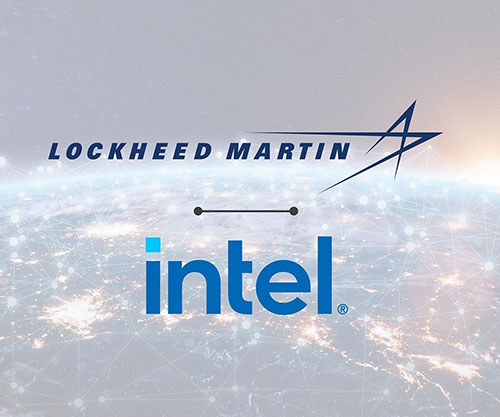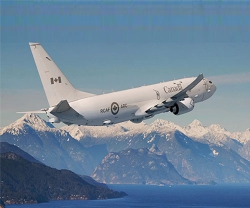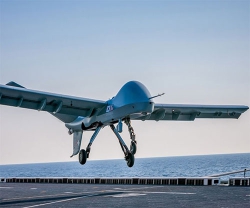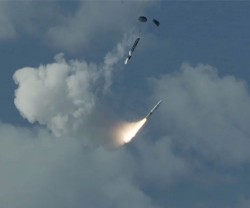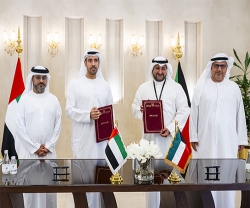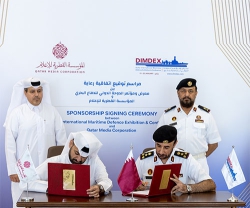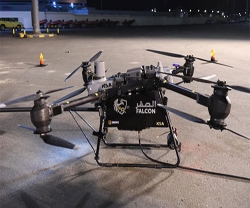Lockheed Martin and Intel Corporation are leveraging their expertise in technology and communications to bring together innovative 5G-capable solutions, enabling faster and more decisive actions for 21st century security.
A Memorandum of Understanding (MOU) signed late last year expands the ongoing strategic relationship between the two companies to align 5G-enabled hardware and software solutions for the Department of Defense (DoD).
“This collaboration between Intel and Lockheed Martin will help accelerate delivery of secure 5G.MIL® solutions to achieve network effects for our customers that will enable prompt, data-driven decisions by military commanders across all operational domains,” said Dan Rice, Vice President of 5G.MIL® Programs at Lockheed Martin.
“As security risks evolve and opportunities to leverage 5G emerge, staying ahead of the threat landscape is more critical than ever,” he added.
Intel’s proven 5G solutions are integrated into Lockheed Martin's 5G.MIL® Hybrid Base Station, which acts as a multi-network gateway for ubiquitous communications between military personnel and current and emerging platforms such as satellites, aircraft, ships and ground vehicles. Additionally, Lockheed Martin leverages Intel’s advanced processor technologies and innovations on network as well as edge, to bring cloud capabilities to the areas of tactical need. This ensures data-driven decision making across air, sea, land, space and cyber domains in support of national security efforts.
“Together, Intel and Lockheed Martin are utilizing the power of 5G to deliver greater connectivity, faster and more reliable networks, and new data capabilities to the DoD,” said Dan Rodriguez, Corporate Vice President at Intel.
“This shows how cloud, network and edge technologies that are proven in enterprise implementations can also bring significant value to the tactical needs of modern defense systems,” he added.
The companies have worked together for a decade and previously collaborated to provide the U.S. military and commercial customers significant advances in secure, reliable, high-performance cloud and edge computing. The companies' collaboration has already successfully improved the security and resiliency of the communications from the enterprise cloud to service members in the field. In late 2021, Lockheed Martin and Intel, using Lockheed Martin’s 5G-enabled ground vehicles, demonstrated how hardened security and 5G.MIL capabilities in cloud computing can enhance survivability capabilities for military personnel. Further work together on a relocatable 5G Hybrid Base Station prototype for Expeditionary Advanced Base Operations will be leveraged in the Open Systems Interoperable and Reconfigurable Infrastructure Solution (OSIRIS) for 5G network testbed infrastructure, which uses Intel technologies and is located at USMC Base Camp Pendleton in Oceanside, California.
The two companies have also worked together on advanced semiconductor packaging applications for high-density electronics, which led to collaboration on the State-of-the-Art Heterogeneous Integrated Packaging (SHIP) prototype project and will continue exploration of additional opportunities.
Lockheed Martin’s strategic collaborations with industry-leading companies like Intel align with its vision to create 5G.MIL defense and deterrence solutions. These solutions bridge commercial technologies into future DOD capabilities that enable Joint All Domain Operations and Joint All Domain Command and Control.
Intel is an industry leader, creating world-changing technology that enables global progress and enriches lives. Inspired by Moore’s Law, Intel continuously works to advance the design and manufacturing of semiconductors to help address its customers’ greatest challenges. By embedding intelligence in the cloud, network, edge and every kind of computing device, Intel unleashes the potential of data to transform business and society for the better.
Headquartered in Bethesda, Maryland, Lockheed Martin Corporation is a global security and aerospace company that employs approximately 114,000 people worldwide and is principally engaged in the research, design, development, manufacture, integration and sustainment of advanced technology systems, products and services.

